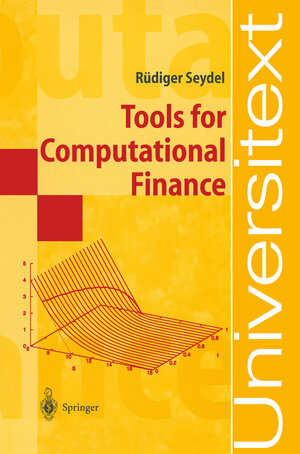
"In an increasingly crowded field of financial engineering titles, Seydel's Tools for Computational Finance stands out as filling an unmet need. It is an intermediate level text with an extremely practical focus. ... This is the kind of book you can read quickly, gaining a broad understanding of practical techniques of financial engineering. On the other hand, you can go through it slowly, working through all the examples and exercises in order to gain indepth practical knowledge you can use on the job. „
www. riskbook. com
“Remarkably, Seydel addresses students of both mathematics and business, presumes only minimal background in either subject, yet ventures deep into the subject in little more than 200 pages. Compare the longer books Mathematics of Financial Markets, by R. J. Elliott and P. E. Kopp (1999), or Methods of Mathematical Finance, by I. Karatzas and S. E. Shreve (1998), which presume research-level preparation in probability theory, delve deeper into theoretical issues, but ignore numerics. On the mathematical side, Seydel covers stochastic processes, random number generation, stochastic differential equations, finite differences, and finite elements. On the financial side, he treats put and call options of so-called American, European, and Asian types. A Web site provides additional material, including colored figures. Summing Up: Highly recommended. „
CHOICE
“Seydel has sought a compromise between justifying his results and avoiding formal proofs. I think he has struck a healthy balance, and I enjoyed reading the book.
...
Hull´s book teaches how to write the equations and Seydel´s teaches how to solve them„
Physics Today
“In my opinion, this book is mainly tailored to financial researchers and practitioners with an applied mathematics or engineering background. Various methods are introduced froma problem-solving point of view, been eventually formulated and summarised as algorithms which are offered for straightforward implementation in computer programmes. This expository style, which is similar to Kloeden´s and Platen´s 'Numerical Solutions of SDEs through computer experiments', makes the book unique among others and will definitely attract a broad range of readers coming from the financial academia or practice.
Quant Notes
„This book is very easy to read and one can gain a quick snapshot of computational issues arising in financial mathematics. Researchers or students of the mathematical sciences with an interest in finance will find this book a very helpful and gentle guide to the world of financial engineering.“
SIAM review (46, 2004)
From the reviews of the third edition:
„Tools for Computational Finance is a book on numerical methods for pricing financial derivative products. … the author concentrates on how to provide numerical solutions to the problem of pricing. Exercises are provided at the end of each chapter and they follow and complement the text very well. In my opinion the book is more for practitioners … . it does guide us in a right direction and I think it could be valuable even for an academic.“ (Ita Cirovic Doney, MathDL-online, October, 2006)



